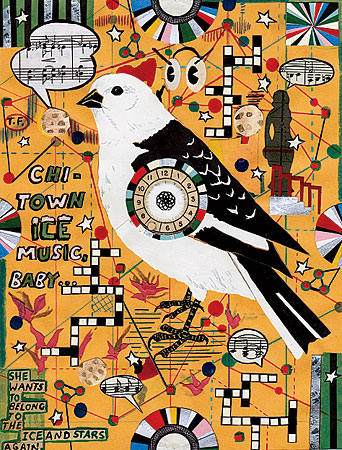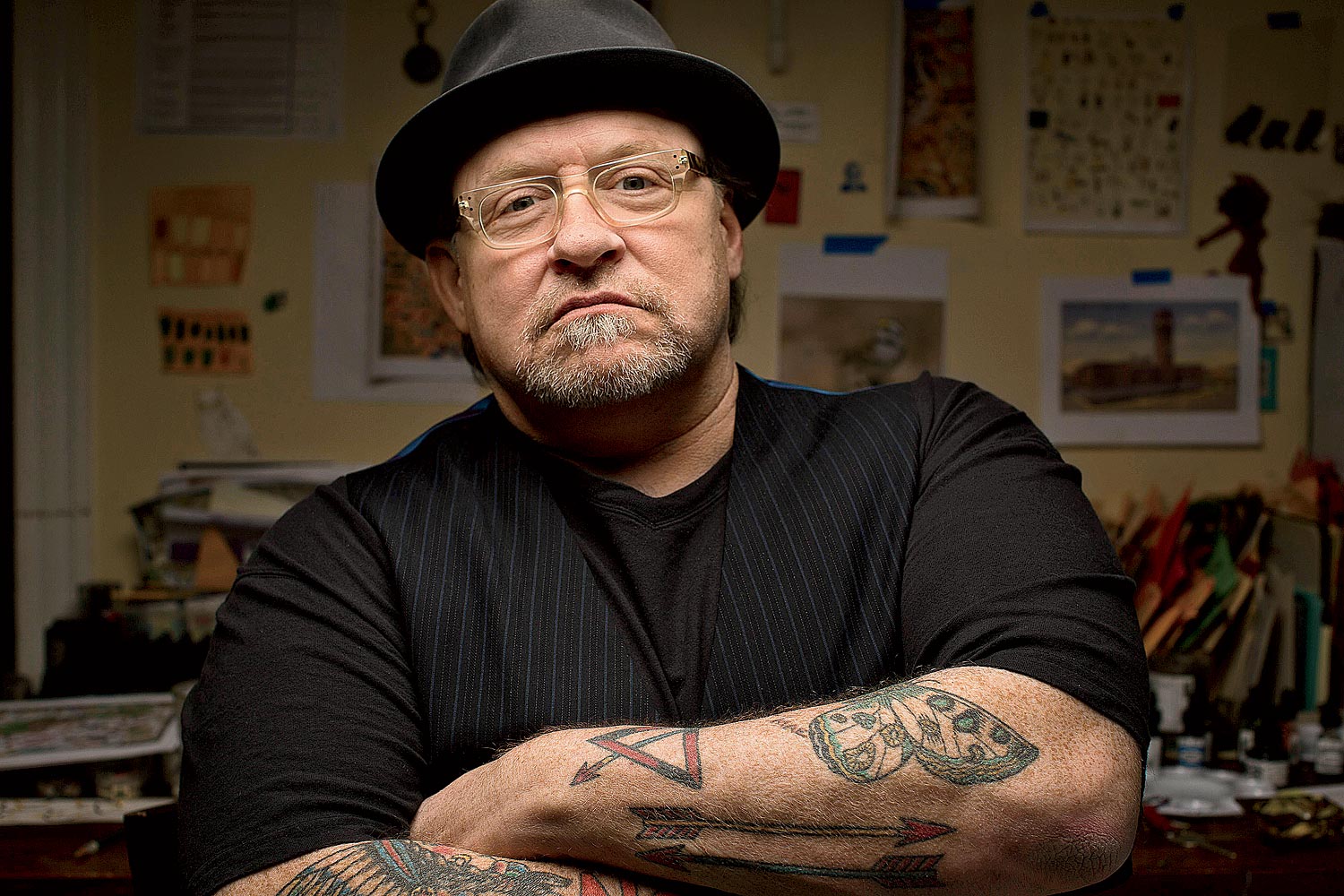When I ask the artist Tony Fitzpatrick for an interview, he suggests we meet at the Ukrainian Village apartment where he’s lived and worked for five years. With his black rescue mutt, Chooch, by his side and D’Amato’s Italian subs on the table, Fitzpatrick wields witty epigrams like a blue-collar Oscar Wilde. “If politics is the last refuge of the scoundrel, then the art world is the first,” he says, his booming voice reaching the length of his shotgun-style apartment.
At 55, the fiercely independent artist, essayist, and screen printer can always be counted on to speak his mind (“[Rahm Emanuel] is the worst person we ever elected”). Fitzpatrick is also one of Chicago’s best-known artists, with nearly 200 prints at the Art Institute and several others at the Museum of Modern Art and the Metropolitan Museum of Art in New York City. A Fitzpatrick work sells for as much as $15,000, and he counts the musicians Joan Baez and Neko Case among his collectors.
It is his roots that Fitzpatrick celebrates in his newest show, The Secret Birds at Adventureland Gallery in Bucktown (April 4 to 25; 1513 N. Western Ave). “The first things I drew were birds,” he says, recalling a moment with his grandmother when he was five. “Every morning she’d toast bread and put jelly on it, then chop it up and throw it out the backyard. I said, ‘Grandma, what are you doing?’ She said, ‘Just listen.’ I remember hearing it: blackbirds and finches and warblers. She said, ‘For a piece of bread, you can hear God sing.’ I never forgot that.”
The Secret Birds, which includes 18 small-scale collages, drawings, and prints is also an homage to nature. “I love pictures that evoke the feeling of the land,” says Fitzpatrick. “[I like] the idea that the land has a memory, that it remembers every transgression.”
The fourth of eight children, Fitzpatrick grew up in a Catholic family in Lombard, Illinois. “I knew who Picasso was when I was six. My mother wrote poetry when she was a young woman. She was extremely literate.”
Though Fitzpatrick says he is not a religious man, he’s held on to the strict Catholic discipline of his youth. Every morning the artist wakes up at 6:30, writes for two hours (he’s penned nine books, four plays, and hundreds of essays), and then spends the next 12 hours piecing together paper collages or cranking out color etchings. “Every time I write or draw, I learn something about myself,” he says.
“He’s giving you a storybook—it’s Tony’s storybook,” says Mark Pascale, a curator of prints and drawings at the Art Institute. The museum, Pascale says, now owns nearly as many prints by Fitzpatrick as it does by Rembrandt, Goya, and Picasso. “Tony is in the golden moment of his career.”
And he’s in his last months as a Chicagoan. Next winter, he plans to take up full-time residence in New Orleans. “The city has been a big part of my heart for a long time,” he says, holding a draft of a book he’s written about the Big Easy. “I’ve just got to live there at some point. Now’s the time.”

The Winter Bird
Drawing, 2014
“About 10 years ago I spotted an Arctic bunting right outside of Marshall Field’s, perched on a mailbox. It had no business being there. I was mesmerized and charmed, and later made the realization that it was the music of chance. It was a private moment in the city. Nature isn’t something that happens 100 miles away. It’s all around us. We’re part of it. It’s ongoing. We are the result of it.”



